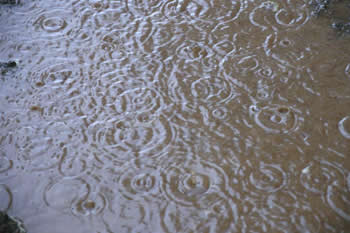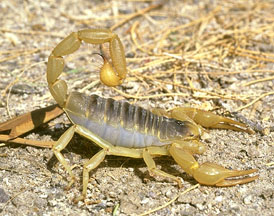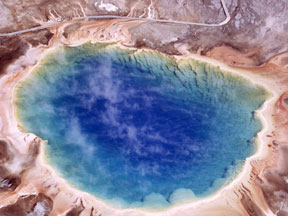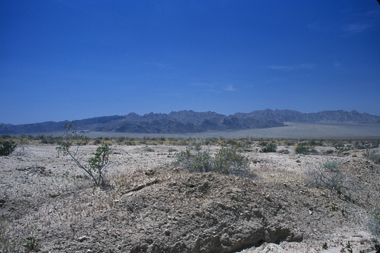This saguaro cactus holds plenty of water and has a waxy layer for protection from the Sun.
Click on image for full size
Courtesy of Corel Photography
Desert Plants
Surprisingly, there are many species of plants that survive in the desert. Most of them are succulents, which means they store water. Others have seeds that lay dorment until a rain awakens them. Regardless, these plants find a way to get water and protect themselves from the heat.
The most famous desert plant is the cactus. There are many species of cacti. The saguaro cactus is the tall, pole shaped cactus you see on television. The saguaro can grow up to 40 feet tall. It can hold several tons of water inside its soft tissue. Like all cacti, the saguaro has a thick, waxy layer that protects it from the Sun.
Other succulents include the desert rose and the living rock. This strange plant looks like a spiny rock. It's disguise protects it from predators. The welwitschia is a weird looking plant. It has two long leaves and a big root. This plant is actually a type of tree and it can live for thousands of years.
There are many other kinds of desert plants. Some of them have thorns, others have beautiful flowers and deadly poisons. Even in the worst conditions, these plants continue to thrive.
You might also be interested in:

Rain is precipitation that falls to the Earth in drops of 5mm or greater in diameter according to the US National Weather Service. Virga is rain that evaporates before reaching the ground. Raindrops form
...more
Like the other inhabitants of the desert, birds come up with interesting ways to survive in the harsh climate. The sandgrouse has special feathers that soak up water. It can then carry the water to its
...more
You can find insects almost anywhere in the world. So it should be of no surprise that there are plenty of insects in the desert. One of the most common and destructive pests is the locust. A locust is
...more
Some environments are inhospitable to most "normal" living creatures. However, these extreme environments are not necessarily lifeless. Certain types of organisms, known collectively as "extremophiles",
...more
Chile's Atacama Desert is one of the driest places on Earth. Few people live there, and most animals, plants, and even microbes find it difficult to scratch out a living in such an arid environment. There
...more
Deserts are full of interesting questions. How can anything survive in a place with hardly any water? Why is it so dry to begin with? You can find at least one desert on every continent except Europe.
...more
This picture shows a part of the Earth surface as seen from the International Space Station high above the Earth. A perspective like this reminds us that there are lots of different things that cover the
...more















